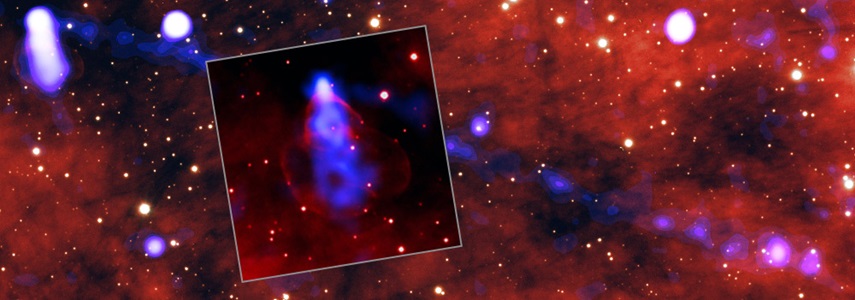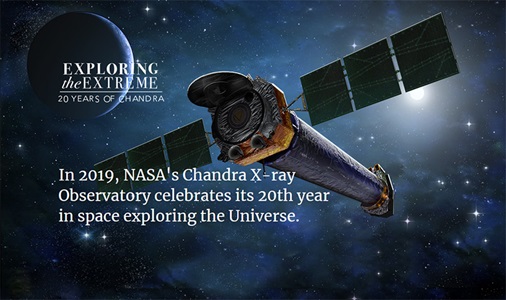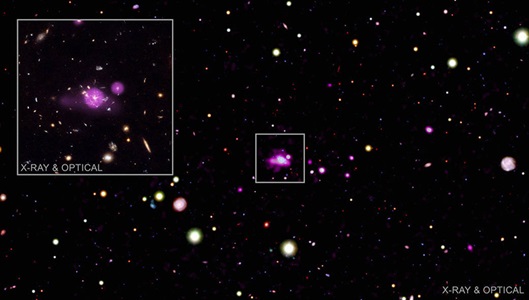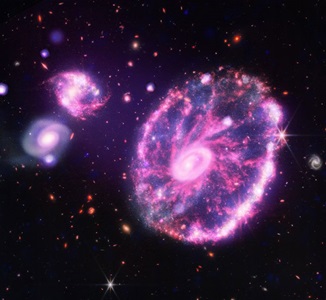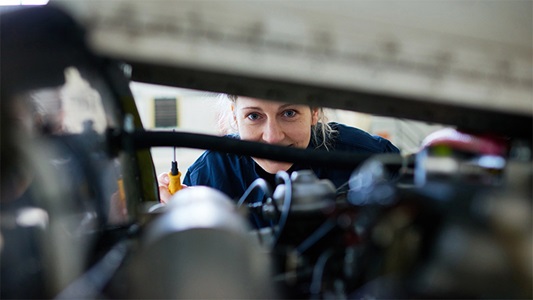Chandra X-Ray Observatory
20 years of extraordinary discoveries to further our curiosity about the universe.

20 Years of Chandra
On July 23, 1999, the Chandra X-ray Observatory was launched, carried by the Space Shuttle Columbia from the Kennedy Space Center in Cape Canaveral, Florida. About a month later, on Aug. 26, 1999, the first powerful images from Chandra were provided to the public.
Over the past 20 years, NASA's Chandra X-ray Observatory has made extraordinary discoveries to further our curiosity about the universe. One of NASA's Great Observatories, Chandra was designed and built to observe X-rays alongside the Hubble and Spitzer Space Telescopes and the Compton Gamma Ray Observatory. Chandra has played a significant role in our astronomical history and in uncovering and solving the mysteries of our universe.

Window to the Universe
As long as astronomers have pointed their telescopes skyward, they've pondered the nature and origin of the universe. X-rays, an invisible form of electromagnetic radiation that originates deep in space, carry answers to many of these questions. Unfortunately, Earth's atmosphere absorbs these high-energy rays, preventing astronomers from learning their secrets.
NASA's Chandra X-ray Observatory (formerly called the Advanced X-ray Astrophysics Facility) is giving astronomers a clearer view of the universe. The Northrop Grumman-built satellite consists of a highly sensitive X-ray telescope, imaging spectrometer, high-resolution camera and associated detecting devices. Chandra offers scientists the opportunity to collect, observe and analyze X-ray radiation. It is helping them achieve a greater understanding of the structure and evolution of the universe.
Expanding our Knowledge
Dark matter, a theoretical force that holds superhot gases within clusters of galaxies, may be three to 10 times more prevalent than the clouds of hot gas and galaxies we can observe. But dark matter has never been seen. Chandra promises to shed light on this cosmic mystery, detecting collapsed stars, planets, black holes or perhaps subatomic particles that may comprise the missing ingredient in galaxy clusters.
The observatory's unique X-ray perspective is providing a new view of cosmic phenomena near and far — from comets within our solar system to quasars on the edge of the observable universe. It is studying the mechanisms of supernovas, the last gasp of dying stars that may give birth to new ones; and probing the secrets of distant galaxies, hubs of explosive activity powered by … what? Because space offers a unique environment to test existing theories or discover new rules of physics, Chandra is expanding our knowledge of plasma physics, elementary particle physics and cosmology.
Additional Chandra Resources
Media Contact
William Furlong
(310) 814-8395
